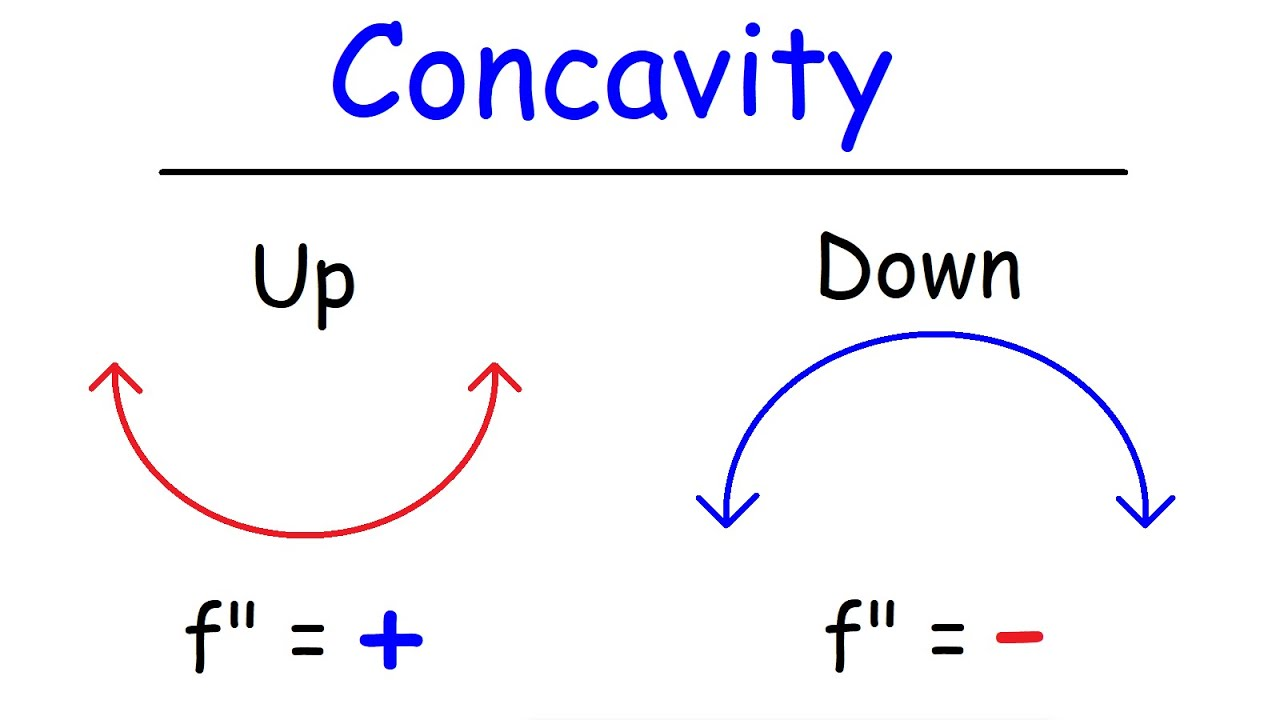Curve Sketching
I understand these concepts (increasing, decreasing, maximum, minimum, etc.) at a very high level, but it is useful to define them precisely.
High level of and
Intuitively, represents the rate of change of the values of (or think of it as the slope of the tangent lines to . We use to understand when a function is increasing and decreasing, as well as find extrema values.
is a bit harder to grasp. It describes the rate of change of the tangent line to . Think of it related to Newton’s law, The second derivative provides information about the curve behavior, which we call concavity.
Increasing and Decreasing, Monotonic
A function is increasing if whenever . A function is decreasing if whenever . We can define these in terms of the derivative,
title: Increasing
If $f'(x)>0$ for all $x \in I$, we say that $f(x)$ is *increasing* on $I$.title: Decreasing
If $f'(x)<0$ for all $x \in I$, we say that $f(x)$ is *decreasing* on $I$ .Note: The converse is NOT true. If is increasing we may still find that at some isolated points.#idontunderstand
title: Monotonic
If $f$ is either increasing or decreasing on $I$, we may sat that $f$ is *monotonic* on $I$. Maxima and Minima (Extrema), Critical Point
A function has an absolute maximum at if for all in the domain of . A function has an absolute minimum at if for all in the domain of .
title: Critical Point
A *critical point* of $f$ is a point at which $f'(c)=0$ or $f'(c)$ does not exist.It's important to note that some functions have no extrema, such as $f(x) = x$ defined on $\mathbb{R}$, or $f(x)=x$ on the open interval $(-1,3)$. It would work if $f(x) = x$ is defined on the closed interval $[-1,3]$.Algorithm for identifying Global Extrema: Closed Interval Method
We use the idea that if is a global maximum or minimum of , one of three things must be true:
- (a critical point)
- is undefined (a critical point)
- is an endpoint of the interval.
Thus, we develop an algorithm for this.
title:The Closed Interval Method
Let $f(x)$ be a continuous function defined over a closed interval $I=[a,b]$. The global extrema (maximum and minimum values) can be determined using the following steps.
1. Determine the derivative $f'(x)$.
2. Determine all critical points $(c_1,\dots,c_n)$ that lie within the interval $I$.
3. Evaluate $f(x)$ at the critical points and the endpoints (i.e., at each of $a$,$b$, and $(c_1,\dots,c_n)$).
4. Compare: The largest output value obtained from the previous step is the global maximum; the smallest output value is the global minimum.Algorithm for identifying Local Extrema: First Derivative Test
title: First Derivative Test
If a function $f(x)$ has a *critical point* at $x=c$, then we have the following:
- If the sign of $f'(x)$ does not change upon crossing $c$, then $c$ is neither a local maximum nor a local minimum.
- If $f'(x)>0$ for $x<c$ and $f'(x)<0$ for $x>c$, then $c$ is a *local maximum*.
- If $f'(x)<0$ for $x<c$ and $f'(x)>0$ for $x>c$, then $c$ corresponds to a *local minimum*.The second derivative test also works.
title: Second Derivative Test
If $f'(c)=0$ and $f''(c)<0$, then $f(x)$ has a *local maximum* at $x=c$.
If $f'(c)=0$ and $f''(c)>0$, then $f(x)$ has a *local minimum* at $x=c$.Concavity, Inflection Point

title: Concavity
If $f''(x) > 0$ on some interval $I$, we say that $f(x)$ is *concave up* on $I$.
If $f''(x) < 0$ on some interval $I$, we say that $f(x)$ is *concave down* on $I$.If the concavity of changes at a point , then we call this point an inflection point.
title: Point of Inflection
For a function $f(x)$ defined on domain $D$, $c \in D$ is a *point of inflection* of $f(x)$ if the following are true:
1. $f''(c)=0$ or $f''(c)$ is undefined and
2. $f''(x)$ switches signs (from positive to negative or vice versa) when crossing $c$.